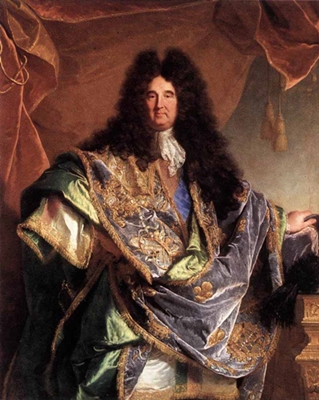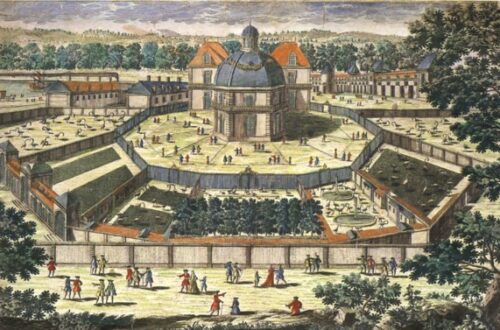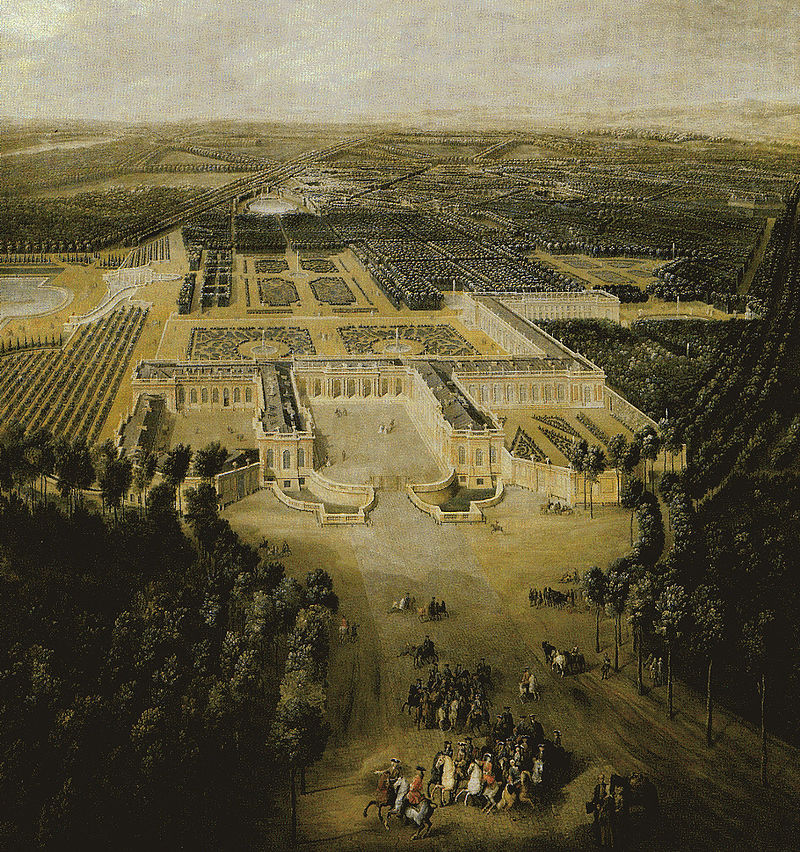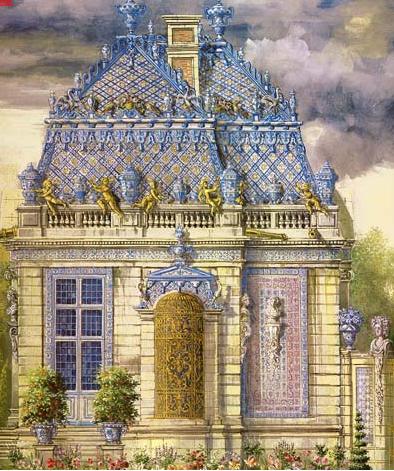Notre-Dame de Paris
That most glorious church of the most glorious Virgin Mary, mother of God, deservedly shines out, like the sun among stars. There is the saying that all roads lead to Rome. In France, all major roads lead to Notre-Dame. The point zero, from which the distance between the French cities is calculated, is located just outside Notre-Dame. Thus one could say, she is the very Heart of France.
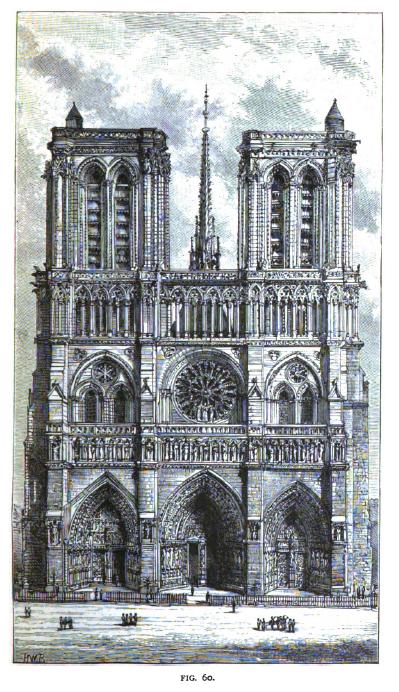 Our Lady of Paris… not just a church, or a building, it is a monument of history, of civilisation, of humanity. Notre-Dame means a thousand different things, it is a thousand different stories and memories… like all monuments, this one changed over the course of the centuries and each century, each epoch, added and repaired, with all the technical expertise at their disposal, to preserve the work done by others. So that we, religious or not, can look at something extraordinary.
Our Lady of Paris… not just a church, or a building, it is a monument of history, of civilisation, of humanity. Notre-Dame means a thousand different things, it is a thousand different stories and memories… like all monuments, this one changed over the course of the centuries and each century, each epoch, added and repaired, with all the technical expertise at their disposal, to preserve the work done by others. So that we, religious or not, can look at something extraordinary.
It is believed that, before Christianity came to France, the side was occupied by a temple in honour of Jupiter, the god of the sky and thunder and King of the gods in the Ancient Roman religion. Back then, Paris was not Paris, but Lutetia. A Roman settlement on today’s Île de la Cité. This temple, centuries later, had to make way for a basilica. It is a little unclear, if this church, dedicated to Saint Étienne, dates back to the end of the 4th century and was remodelled in the 7th century, or if it was built in the 7th century with stones dating back to the 4th century. Either way, it was rather large for its time. This basilica was remodelled again in 857 and turned into a cathedral. Then remodelled again, to make it larger in order to fit more people inside… but although it was made much larger, it still did not fit enough people in. The city was growing fast. Maurice de Sully, Bishop of Paris, decided in 1160 to build an even larger church. He thus had the current church destroyed, with the intention to recycle as much as possible of its stone.
The construction of the new cathedral, Notre-Dame, began three years later, in 1163, with Louis VII and Pope Alexander III being present for the laying of the cornerstone. Workers, masters of various crafts along with ordinary workmen and apprentices, flocked to Paris from all over Europe to raise this new House of God into the sky. Along with them, the residents of Paris, after finishing their day-jobs, rushed to the side to help with whatever they could. Their names are lost, but the stones still tell of them. The first construction phase circled around the creation of the ambulatories and choir, which was done by 1177. The high altar was consecrated on 19 May 1182. After which phase two began, the creation of the four sections of the nave behind the choir and its aisles to the height of the clerestories. Then in 1190, the bases of the facade were put in place and the first traverses were finished.
Building something as vast as Notre-Dame, was a job for multiple generations. It is not something that could be done within a few years. It would take decades and everyone was aware of it. Maurice de Sully died in 1196 and Odon de Sully, who was, although of the same name as Maurice, not related to him, took over. He oversaw the completion of the transepts, which were added to allow more light inside, and continued work on the nave. As Odon died in 1208, the work on the nave was nearly done and the western facade mostly in place. It took onto mid 1240 to fully finish it. In the meanwhile, between 1225 and 1250, the upper gallery of the nave was constructed and the two towers on the west facade raised into the air. Every stone placed there by the workers, made them feel closer to God. They were not building for themselves, or for those who came after them, but for God… or a greater Good.

Mid 13 century, the transepts were revamped in a newer style of French Gothic architecture, called the Rayonnant style, and a gabled portal to the north transept was added along with a spectacular rose window. Shortly later, the southern transept received a similar style. Both of them were elaborately adorned with sculptures, the south transept telling of the live of local saints, the northern transept of Theophilus and the infancy of Christ. The 13th century also brought an important innovation. Notre-Dame’s famous flying buttresses. A smart way to direct the force of weight, which was carried by the walls before that, to the sides. This allowed for higher and thinner walls.
Around 1250, the new cathedral was in so far finished, as it had everything that was needed to be functional… quite some time had passed by then since the first stone was laid and the first walls went up. The people of 13th century took issue with the portals of the transepts, which were not fitting the rest. They were build in a Romanesque style, the rest was richly adorned French Gothic style. Renaud de Corbeil, the Bishop at that time, decided to remodel those Romanesque parts. Six master builders, Jehan de Chelles, Pierre de Montreuil, Pierre de Chelles, Jean Ravy, Jean le Bouteiller and Raymond du Temple worked over the course of the next hundred years to execute the work. (Imagine today someone would propose works on a building that would take a century to complete….)
Around 1250, parts of the northern transept were taken down to lengthen the whole thing in that direction, shortly after the same was done on the southern side. Around 1265, Pierre de Montreuil completed the southern cross, followed by the south facade and its stunning rose window. Under him, the chapels were completed as well and work to replace the flying buttresses of the choir started. Under Pierre de Chelles, the rood screen was build and work on the chevet chapels began. Jean Ravy, in charge from 1318 to 1344, completed them and created the new flying buttresses of the choir and the choir fence. The work was finished under Raymond du Temple.
And there she was, a true beauty. Countless hours of work went into her. People balanced fifty metres above the ground with heavy stones, people carved stone and wood, wrought fences, polished marble… Notre-Dame’s two towers are sixty-nine meters high and were the tallest structure in Paris until the Eifel Tower was raised. They dominated the skyline of the city for centuries and Kings, Emperors and peasants looked up to them as we do today. People of the past marvelled at the sight of the three rose windows, as we do today. The west rose window, between the towers, is the oldest and smallest of them. It was created in around 1225, the stained glass in it is way younger, for it had to be replaced in the 19th century… but that does not make it less precious. (Mind you, even things done in the 19th century are rather old by now, but some people tend to forget that and the effort that put into recreating it all.) Both of the transept rose windows are larger than the western one, thanks to the newer buttresses installed there, which made it possible for the walls to be made thinner and stronger at the same time. The northern rose window was created around 1250, the southern one around ten years later and was given to Saint Louis aka Louis IX. It is particular notable due its size and amount of stained glass, consisting of 94 medallions, arranged in four circles. It shows the life of Christ on earth and those to witness it. Much of the original glass was damaged over the course of the centuries and had to be replaced.

Particularly noteworthy as well is Notre-Dame’s Forest. The beams that hold….. held the roof of the Cathedral. One whole oak tree was needed to create one of the beams and the sheer amount of them, around 21 hectares were cut down, is what gave this part of the church the nickname Forest. The Gothic style came with high vaulted ceilings, which called for sturdy wood to support the heavy roof. Usually those roofs were made of clay, but due to a lack of clay in the Paris area, it was decided to use much more heavy lead. Trees of a certain size were needed for this construction, so at the time they became beams, they were very likely already 300 or 400 years old.
Notre-Dame is ever-changing. The people of the Renaissance, did not care much for the Gothic style and covered much of the Gothic pillars and walls inside the church with large hangings. Which was probably what the future Henri IV saw as he caught a glimpse of the inside of the cathedral at his wedding in 1572. Funny as it might seem today, Henri, being a Protestant, was not allowed to enter the venerable Notre-Dame for his own wedding to Marguerite de France. The wedding vows were exchanged in front of the portals and after that, Henri withdrew to until the actual ceremony inside of Notre-Dame, with someone else standing as proxy for Henri, was over.
One of many historical events to take place at Notre-Dame. Some years before Henri’s wedding, Mary Stuart, aka Mary, Queen of Scots, was married to the future François II at Notre-Dame. In 1431, the English Henry VI was crowned King of France at Notre-Dame. In 1455, people gathered at Notre-Dame to witness the opening of the revision process of Jeanne d’Arc.
…but now, it was time for the baroque style to take over the world. Louis XIII, having quite the hassle to produce an heir, dedicated, on 10 February 1638, all of France to the most holy and glorious Virgin. An heir, Louis XIV, was born to him in September that year. The Sun King was on familiar terms with Our Lady from his very childhood on. His mother took him there for mass or their devotions, later on he visited for various Te Deums and to behold the flags and spoils of conquered nations his soldiers brought home. What a better place to put up the heraldic standards won in war than the very Heart of France? The Duc de Luxembourg had the nickname tapissier de Notre-Dame, because he brought so many of them. Louis went there for Easter, for special celebrations, like a Te Deum held to celebrate his wedding, also in times of sorrow, or when battles were won and wars ended.
To fulfil his father’s promise, Louis XIV ordered renovations at Notre-Dame. Starting in 1699, Our old Lady received new interior decorations, especially at the choir area. The rood screen was removed and replaced with one of wrought gilded iron, much more spectacular to behold, high-reliefs were replaced with grilles, and the whole area made larger to make grand ceremonies possible. Notre-Dame also received a new High Altar with a marble Pietà flanked by statues of Louis XIII and Louis XIV, which (thank God) are still there today. The kneeling statue of Louis XIII offers crown and sceptre to the Virgin, while that of Louis XIV presses a hand to its heart and renewing the vow his father once made.

…and what’s church without bells? The most famous bell of Notre-Dame, that of the north tower, is called Emmanuel. Tuned to F sharp, this bell dates back to the 15th century and was recast under Louis XIV, who also gave it its name. Emmanuel rings for the most important Christian feast-days, like Christmas and Easter, and heralds the most important events of French and World history. It sounds for the coronation of Kings, the birth of dauphins, or times of sorrow, for funerals of French heads of state. Emmanuel also rang to herald the end of World War I and World War II and Notre-Dame saw Paris rejoice at her portals.
Some more changes, like the replacement of stained glass windows with windows of white glass and the painting of the walls, followed before the Revolution swept over the country… and Notre-Dame became a warehouse.
The cathedral became property of the State and was targeted again and again by vandalism. The statues biblical Kings were beheaded, because the people mistook them for French Kings. The statues of the portals, with the exception of that of the Virgin, were destroyed. Then Notre-Dame was dedicated to the Cult of Reason and her altar transformed into one of the goddess of Reason. As later on, all Catholic worship was banned in Paris, Notre-Dame was turned into a warehouse and suffered more damage during it. A lot of the cathedrals bells were taken down and melted during those days. Luckily, Emmanuel survived the Revolution and still sounds today.
 Thanks to Victor Hugo’s book Notre-Dame de Paris, which you might know as The Hunchback of Notre-Dame, the old cathedral was saved pretty much last-minute from being taken down. As Napoleon rose, Notre-Dame was reinstalled as a place of worship and some renovations were made to pretty everything up in order for Napoleon to crown himself Emperor at Notre-Dame… but it was by far not enough. The whole building was in a desperate state due to years of neglect.
Thanks to Victor Hugo’s book Notre-Dame de Paris, which you might know as The Hunchback of Notre-Dame, the old cathedral was saved pretty much last-minute from being taken down. As Napoleon rose, Notre-Dame was reinstalled as a place of worship and some renovations were made to pretty everything up in order for Napoleon to crown himself Emperor at Notre-Dame… but it was by far not enough. The whole building was in a desperate state due to years of neglect.
Victor Hugo was an admirer of Notre-Dame and his book, published in 1831, made the majority of the people aware what a historic side their Lady was… and what a shame it was that she was vandalised again and again. During the French Revolution of 1830, the south rose window was seriously damaged by the burning of the next-door residence of the archbishop and the sacristy had been plundered. The people needed a little reminder what important events had taken place at Notre-Dame… and they are countless. Apart from the above mentioned ones, Élisabeth de France was married there by proxy to the King of Spain in 1559, Henri IV celebrated the taking of Paris from the League there, Turenne became a Catholic at Notre-Dame, people condemned to death, like the Marquise de Brinvilliers, were brought to the portals of Notre-Dame to ask forgiveness for their crimes, Napoleon did not just crown himself there, but also celebrated the baptism of his son, Napoleon II, there. A bit later, Napoleon III married Eugénie de Montijo there… and that is just a few events that took place at Notre-Dame.
In 1844 Louis-Philippe declared that Notre-Dame would be restored to glory. The plans of Jean-Baptiste-Antoine Lassus and Eugène Viollet-le-Duc seemed to be the best. Those two created the Notre-Dame we know…. knew…
As part of the work done at the church, the spire was reconstructed. The original spire, probably built between 1220 and 1230, was taken down way earlier already, in 1786, due to fear it might fall. By that time, it was so badly weathered and damaged that it could not be saved. The new spire was a lead-covered construction of oak, guarded by statues of the 12 apostles, all turned towards Paris… apart from Saint Thomas, who suspiciously looks like Viollet-le-Duc. Saint Thomas, patron of architects, faces the spire.
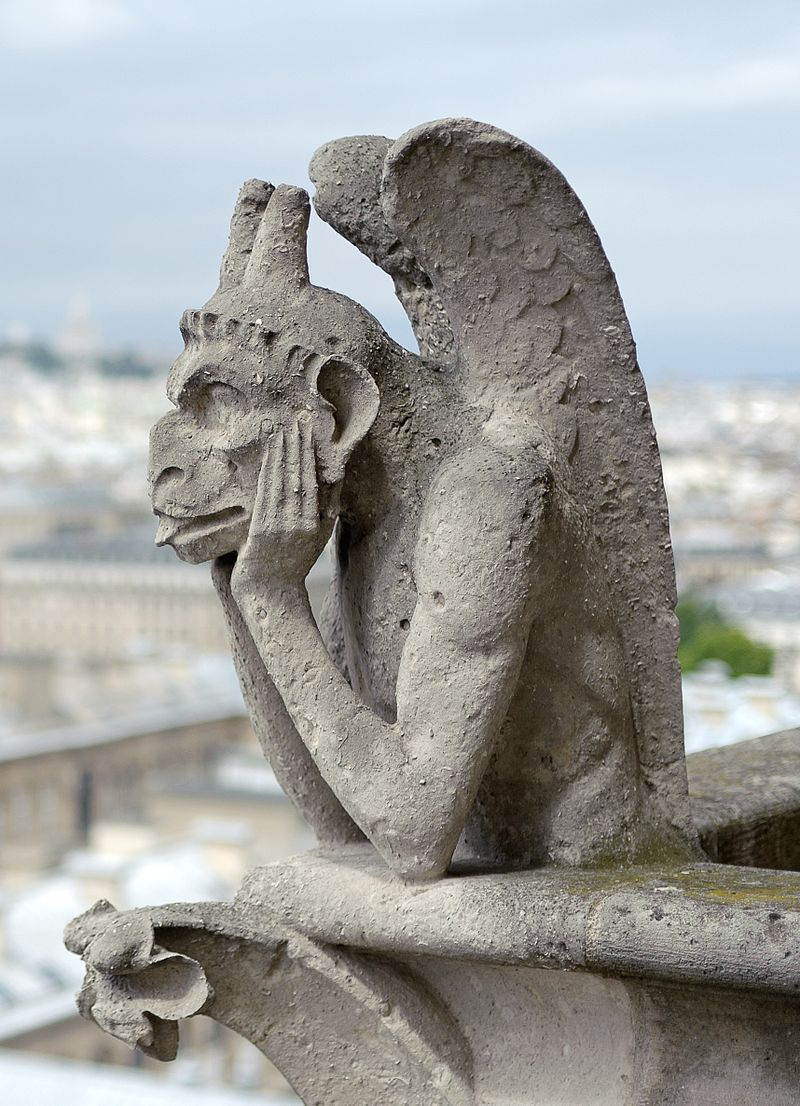 The Galerie des Chimères was redone too. In the 18th century, many of the original gargoyles started to crumble and fell down some 60 metres… since that was very dangerous, a lot of them were removed. They are not just decorative, but have an actual purpose: they are (were) rain spouts. The rain water is (was) led to them over series of lead canals on the roof and the gargoyles sprout the water as far as possible away from the walls. A lot changed at Notre-Dame during those days. Collapsed walls were renewed, the southern rose slightly moved and repaired, decorations replaced and recreated… not always as they were before… the portals were repaired and the area in front of the church cleared.
The Galerie des Chimères was redone too. In the 18th century, many of the original gargoyles started to crumble and fell down some 60 metres… since that was very dangerous, a lot of them were removed. They are not just decorative, but have an actual purpose: they are (were) rain spouts. The rain water is (was) led to them over series of lead canals on the roof and the gargoyles sprout the water as far as possible away from the walls. A lot changed at Notre-Dame during those days. Collapsed walls were renewed, the southern rose slightly moved and repaired, decorations replaced and recreated… not always as they were before… the portals were repaired and the area in front of the church cleared.
Notre-Dame burned shortly after the renovations were finished. In 1871, rioters set fire to some benched and chairs, but the fire was put out in a swift without causing much damage.
The two World Wars did not cause much damage to Notre-Dame either… but pollution became a serious problem, causing erosion of the whole exterior and a discoloring of the stones. The famous gargoyles and turrets began, by the end of the 1980s, to crumble again and some of them had to be taken down. The spire was in no good condition either anymore. New renovations began at the start of the 1990s and they were not yet finished on 15 April 2019, as we all stared at our TVs and watched what we thought to be the end of 850 years of history.
Now, I won’t lament the fire here… partly because I still can’t believe what I saw, partly because I do not know what to say. I’m relieved the worst was avoided. I applaud the firefighters of Paris and the 12th century craftsmanship, parts of the latter, like the Forest, are gone… the vault they built saved much of Notre-Dame and also the high altar. I have no doubt that Our Lady will shine again and how long it takes to make her shine again, doesn’t really matter, does it? She means a lot of different things to a lot of different people and if she means something to you, which I presume she does since you read this, consider to make a small contribution to help her shine again… I made a contribution, not much, because I don’t have much, but maybe enough to clean a stone or two. It’s not about religion or politics, it’s about preserving our past, the efforts of those before us, and adding our own efforts, so the people of the future my look at her.
